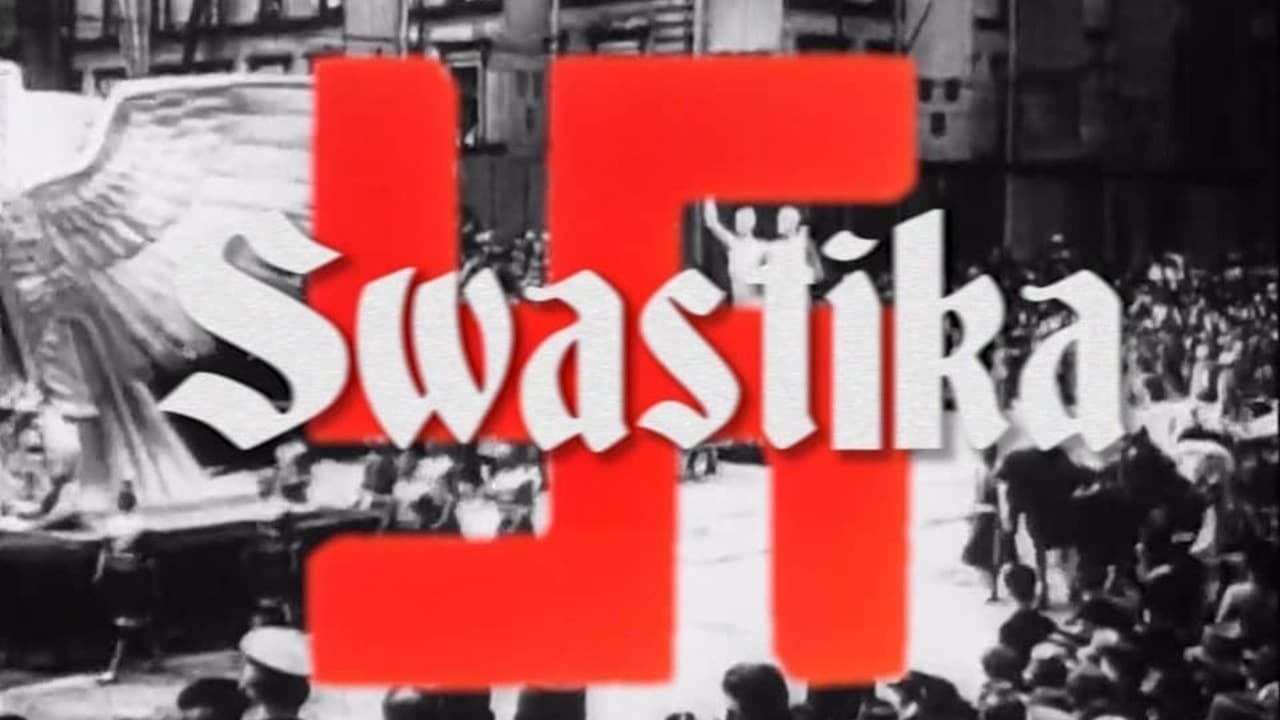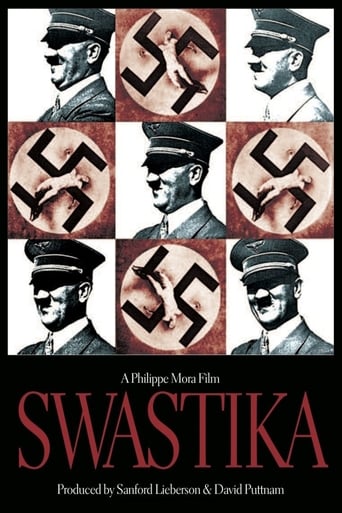

Excellent, a Must See
... View MoreThere's a more than satisfactory amount of boom-boom in the movie's trim running time.
... View MoreThis film is so real. It treats its characters with so much care and sensitivity.
... View MoreA clunky actioner with a handful of cool moments.
... View MoreIn the 1970s, historian Lutz Becker discovered a singular contemporary document: the so called "Home Videos" of Eva Braun. The 16 mm images show Adolf Hitler and his entourage in his country home Berghof at Obersalzberg. Becker turned to the young director Philippe Mora, who arranged the Home Videos with other footage from Germany in the 30s. The result was an unusual documentary: "Swastika". It premiered in 1973 at Cannes, where it caused a scandal. The movie had to be stopped halfway through, because the audience was irritated by the seemingly trivializing depiction of Hitler. In France, the movie role was stolen from a cinema and spread over the graves of Jewish Holocaust victims.As you can see, "Swastika" was political dynamite. It was one major decision by Philippe Mora that caused all the fuss: He renounced every didactic commentary. There is no voice-over contextualizing the footage. Whoever watches this movie has to establish the critical distance alone. We have to find our own way through the propaganda Mora confronts us with. That makes for a challenging, captivating experience. The movie isn't completely neutral, though. There might be no verbal commentary, but there certainly is a stylistic one. For instance, in one scene we see Hitler taking a walk with a small girl, where Mora cuts repeatedly to pauperized ghetto children. Interestingly, these direct condemnations form the weakest parts of "Swastika". The movie is at its best when it just shows us the German delirium that was the Third Reich: cheering crowds, swastikas everywhere, sappy art, orotundity à la Riefenstahl, and finally Hitler presenting himself as a cool-headed and insightful leader. This madness ought to be a punch in the gut of every (reflected) viewer.Then there are the color movies that Eva Braun recorded at Obersalzberg. We see a middle-class community enjoying itself, all while the Holocaust is raging. Among them: Hitler the personified evil, shown in all his banality. He's shockingly boring, standing around clumsily, almost dim-witted; talking about the Hollywood classic "Gone With the Wind", pondering the future of technicolor and playing with his dog Blondi. What do these images want to show us? What can they show us? The answer is: not much. At least nothing we shouldn't have known in the first place. Hitler wasn't some kind of monstrosity that came from outer space. He was a human like all of us. If we dehumanize him, we will never understand the catastrophe that was Word War II - insofar it is understandable at all. That's a simple yet important message the movie tells us rather clumsily at times. But "Swastika" shouldn't be reduced to that basic thesis. It shows more than it tells. The juxtaposition of image and sound is especially remarkable. The love song "What Wouldn't I Do for That Man" ironically characterizes not only the relationship between Hitler and Eva Braun, but also the Hitler cult of the Germans. The use of Noël Coward's satirical song "Don't Let's Be Beastly To The Germans" after devastating pictures of mass extermination is downright cynical. To this day, "Swastika" is a brave documentary that omits instruction (almost) entirely. The execution is a bit shaky, but you can't deny the unsettling atmosphere Mora's editing creates.
... View MoreI think the scariest thing about Swastika is that Hitler and his amoral cronies looked about as threatening as a bunch of accountants on holiday for most of this movie. For the bulk of the home movie sequences the fuhrer & co could have been just as easily been seen as "uncle Freddy from Bathurst", which is an indication of just how non-evil these people appeared on the surface, no slavering fanatics or blood drinking monsters to be seen here kids, just a group of rather dull, boring people with nothing much to say that would set them apart from anyone else. And it can't help but make me wonder that if a bunch of boring old farts like these people are capable of initiating one of the most horrifying periods of the twentieth century then there is perhaps no limits to the potentiality for evil buried in the darker recesses of the human psyche, no matter how banal the person may appear on the surface.
... View MoreHome movies of Hitler with Goering & Goebbels & Eva & the gang (much of it at der Berghof, much shot by Eva), a bit of Bormann, Himmler, & Speer as well, interspersed with plenty of domestic documentary footage, predominantly from 1933 to 1939. Eva exhibitionistically posing in a swimsuit whilst hanging from a lakeshore tree branch; Adolf lovingly petting a German shepherd, & elsewhere observing that a recreational-boar-hunting "Göring should go into the forest with a spear." A squadron of planes flying in perfect swastika formation, Neville Chamberlain's declarations of triumphant diplomacy, even Jesse Owens praising his hosts' treatment at the 12th Olympics.These were gay, heady times in the Third Reich, and the camera was there to capture it. Fairly fascinating to hear Adolf talk in a calm, conversational tone without spewing venom, and even more refreshing to endure no predictably prejudising Allied-oriented narration, even when things inexorably but slowly begin to take a darker turn in the last third of the film, and der Juden problem begins to emerge (to which a recently fled Einstein vaguely makes a public response).Quite enlightening to just slowly take it in and in a measured manner comprehend for yourself what you're seeing; thank you, Mr. Mora, for that liberty. Released in the year 1973 (apparently causing something of a riot at its Cannes premiere), was banned im Deutschland for the next 36 for fear that seeing the human side of Hitler would de-demonize him. (The director followed up this effort with his first feature film, Mad Dog Morgan with Dennis Hopper.)Among the special features (in the Australian version of the DVD, at least), the Leni Riefenstahl attack piece has received both praise and excoriation.
... View MorePhilippe Mora was the person who as a 19 year old film student discovered the now well known personal films of Eva Braun (that would make a fine film in itself). This fascinating color film footage is incorporated into this un narrated documentary along with a wide assortment of original Nazi newsreels and propaganda films to present life in Nazi Germany from 1933-45 as seen through the propaganda filmmakers (and Eva's) camera lens. A wonderful classical music score accompanies. This film is quite rare and is generally unavailable. I believe it was nominated for an award (or won an award). Nevertheless,if you get a chance to see it, buy it, etc, do it. It is the best documentary film on Nazi Germany of it's kind with much never before seen original footage.
... View More